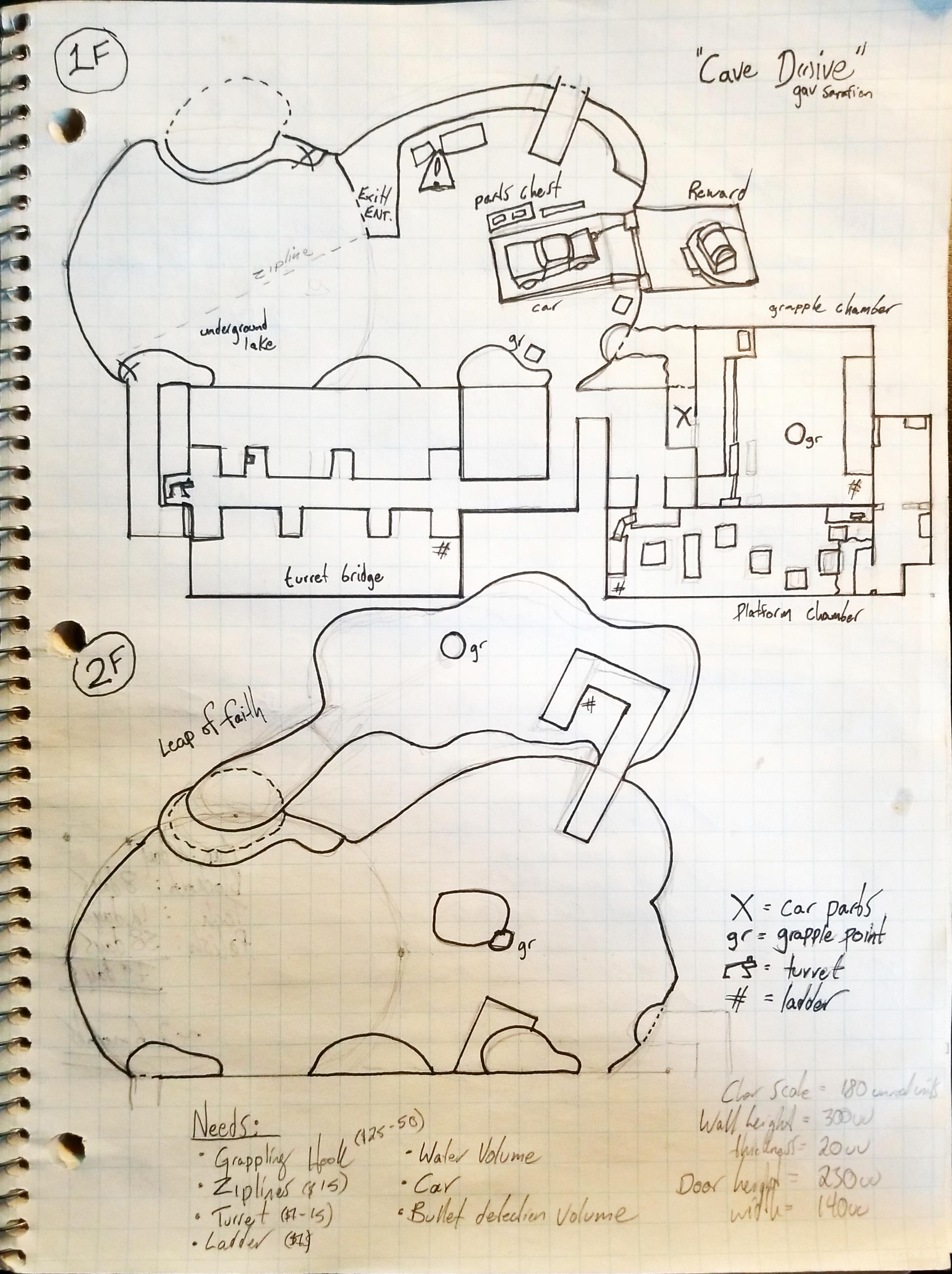Design
Cave Drive was originally a level made as part of a mentorship with two amazing colleagues at Ubisoft Toronto. Due to the nature of our work, I couldn't show that project outside of the studio. Naturally, I wanted to create a version that I could freely share, and so I took my design into Unreal.
Having already made the level once was a huge boon - coming to Unreal with an established design with many iterations and feedback applied helped speed development time along considerably. I drew up a new papermap, scoped out my tech and asset needs, and started to get to work.

Going from having a raw design and lots of pre-made assets and features in the original level, to having a refined design and no features or assets was a challenge. Creating the blockout was fairly simple; I made sure to be consistent with metrics for walls, doors, etc, and tweaked the design where needed. After that, I spent time brushing up on Blueprint and many, many hours on YouTube finding tutorials for the various mechanics I needed. This included ladders, water dynamics/volumes, grapples, ziplines, a turret, and more. I customized the default Unreal FPS template to better suit my needs, and to accomodate the feel of the level.